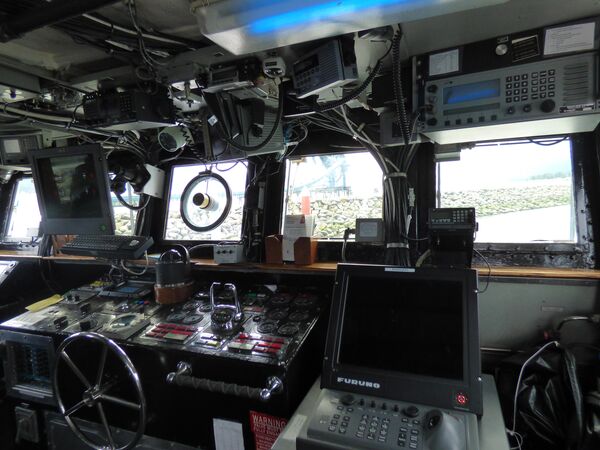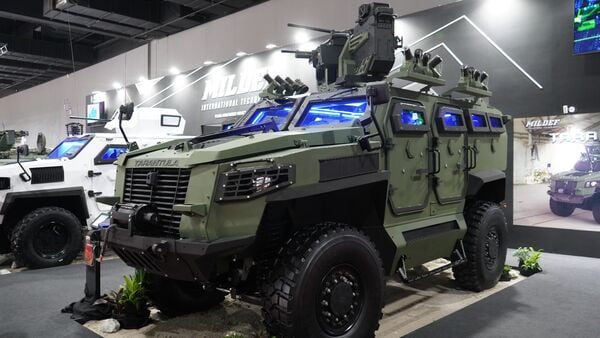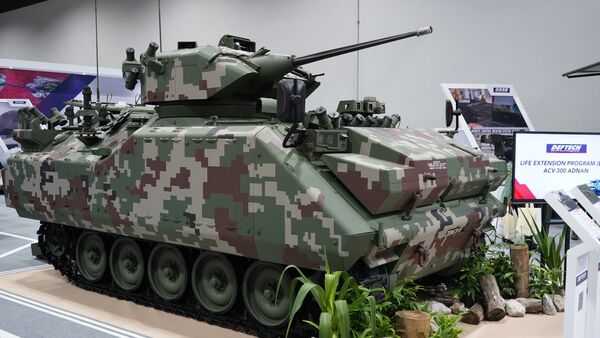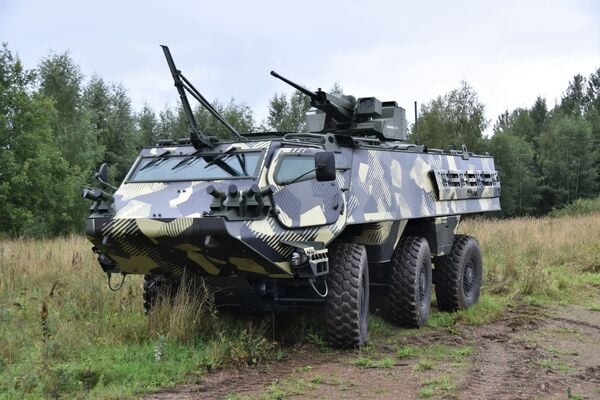- About
- Intara
- Capabilities
- Advisory
- Resources
- News
- Store
USCG faces logistical and operational challenges in Alaska for Island-class patrol forces
09 August 2022
by Michael Fabey


Older navigation and propulsion systems make it difficult for the US Coast Guard to operate and maintain Island-class patrol forces. (Michael Fabey)
To maintain its Island-class boats and continue patrolling the treacherous Alaskan coast, the US Coast Guard (USCG) must overcome logistical and operational challenges, USCG officials told Janes .
The USCG believes it can keep the 110-ft (33.5 m) Island-class boats operational as the service builds and deploys the replacement fleet of Fast Response Cutters (FRCs). The USCG commissioned its first 154-ft (46.9 m) Sentinel-class John McCormick (WPC-1121) on 14 April 2017 in Ketchikan, Alaska.
Eventually the remaining dozen Island-class vessels will be replaced by FRCs, countrywide. Alaska USCG officials are planning to keep patrols going until then.
“I'm very confident we can maintain the 110s beyond their scheduled decommissionings right now,” Commander Timothy Boettner, commander of the Ketchikan USCG base that supports the regional ship needs, told Janes in July.
He said there are three Island-class boats in Western Alaska and two FRCs supported by Ketchikan.
DSA 2024: Mildef outlines 4×4 armoured vehicle programmes
07 May 2024
by Kapil Kajal


The Tarantula vehicle (pictured above from the DSA 2024 exhibition) is equipped with a remote-controlled weapon station with multiple machine guns – a 12.7 mm machine gun and a 7.62 mm co-axial machine gun – and 16 units of 76 mm grenade launchers. (Janes/Kapil Kajal)
Malaysian firm Mildef International Technologies (Mildef) has showcased three 4×4 armoured vehicles known as Tarantula, High Mobility Light Tactical Vehicle (HMLTV), and Weapon Carrier Vehicle (WCV) at the Defence Services Asia (DSA) 2024 exhibition held in Kuala Lumpur from 6 to 9 May.
Ahmad Ziad Rehman Bin Ahmad Zaidi, senior assistant engineer at Mildef, told Janes that the Malaysian Army has already ordered 178 Tarantula vehicles in 2023, while the other two vehicles are yet to be tested by the service.
The delivery of Tarantula vehicles will be initiated by the end of 2024, and nearly 80 vehicles will be delivered in the first batch, with final delivery in 2027, Ahmad said.
According to Mildef specifications, Tarantula has a crew capacity of 10, and it has a length of 5,700 mm, a width of 2,500 mm, and a height of 2,500 mm.
DSA 2024: DEFTECH, FNSS unveil upgraded Adnan vehicle prototype
06 May 2024
by Kapil Kajal


The upgraded ACV-300 – pictured above from the DSA 2024 exhibition – is fitted with a new-generation remote-controlled weapon system with a close-range surveillance system, auxiliary power unit, air conditioning system, automatic fire suppression system, spall liners, driver vision system, and navigation system. (Janes/Kapil Kajal)
Malaysia's state-owned DRB-HICOM Defence Technologies (DEFTECH) and Turkish vehicle manufacturer FNSS have unveiled a prototype of the upgraded ACV-300 ‘Adnan' tracked armoured combat vehicle at the Defence Services Asia (DSA) 2024 exhibition held in Kuala Lumpur from 6 to 9 May.
Mohd Nizam Saedon, head of the engineering department at DEFTECH, told Janes on 6 May that the vehicle, which has been in operation since the early 2000s, is being upgraded to extend its operational life.
The turret of the vehicle is upgraded with a 25 mm sharpshooter turret as a part of the upgrades, Mohd said.
Other enhancements include the addition of a laser rangefinder and a thermal imager in the turret, a laser warning system, and a 360° situational awareness system, Mohd added.
He said the Malaysian Army has “successfully” tested the upgraded vehicle, and DEFTECH is awaiting orders from the service.
Germany joins CAVS R&D phase
06 May 2024
by Nicholas Fiorenza


After joining the CAVS programme in April 2023, Germany has joined the programme's R&D phase. (Patria)
Germany has joined the Finnish-led 6×6 Common Armoured Vehicle System (CAVS) vehicle research and development (R&D) phase, Patria announced in a press release on 2 May. It joins the other CAVS countries – Finland, Latvia, and Sweden – participating in the R&D phase.
Patria said joining the R&D phase would give Germany access to the results of the product development packages developed in the CAVS programme and allow it to co-define its requirements for future mission variants.
A Patria spokesperson told Janes on 3 May, “During the R&D phase those variants that are important for every individual country participating in the programme are being evaluated by those countries. Germany now has access to the results of the product development packages developed in the programme and will be in a position to co-define the requirements for future mission variants. The timeline for this phase has been different for each participating country, depending on their requirements and needs.”
Germany formally joined the CAVS programme in April 2023 with the signing of the programme's technical arrangement.
To maintain its Island-class boats and continue patrolling the treacherous Alaskan coast, the US Coa...
Latest Podcasts
Using OSINT to support law enforcement
Ritu Gill, Intelligence Analyst, joins Harry and Sean to discuss the practical use of OSINT to support law enforcement. Ritu discusses it’s use in supporting risk assessments and classified or closed sources of intelligence. She also discusses t...
Listen nowJanes Case Studies
Using Janes Intara to build a common intelligence picture: Russian build up on the Ukrainian border
View Case StudyNews Categories
 Sea Details
Sea Details